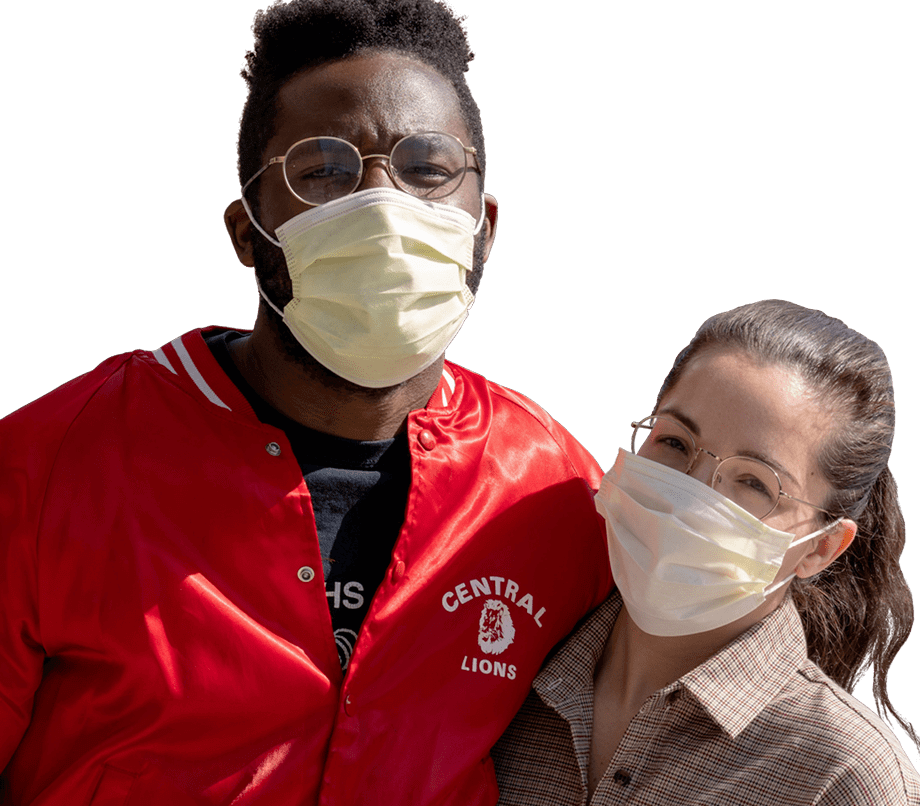Other News This Week
The more time we put into a relationship, the more we learn about our partner. Some revelations can be as small as learning that your partner had a sixth finger as a child. But, others can mean finding out something more serious, like learning that your partner has human immunodeficiency virus, more commonly known as HIV.
There are many myths surrounding HIV-positive people and one of them is that it is impossible to maintain a happy, healthy and sexual relationship with an HIV-negative partner. This is not true. If you learn that your partner is HIV positive and you know for sure that you are HIV negative, you are in what is called a mixed status relationship (also known as a sero-different couple).
Here are ways to help keep yourself and your partner safe.
Know Your Status
Communication is key in any relationship. So is knowing and openly discussing your HIV status. Both partners are responsible for knowing the status of their sexual health. It is heavily advised to get tested with your partner and share the results prior to engaging in sexual activity. Knowing your status reduces the likelihood of transmission.
Note: Learning that your partner is HIV positive after you’ve engaged in sexual activity is not solely their fault if you did not take the initiative to protect yourself by getting tested. Everyone should get tested at least once a year. Those with HIV-positive partners (or are at high risk of transmission) should get tested more frequently, around every three to six months.
“Create a safe space to talk about the sexual health of both partners. We focus a little too much on HIV on its own. There are other sexually transmitted infections that can occur. Talk about recent history. Remember that there are resources for both positive and negative individuals. Remember that a mix status couple can have a healthy, rewarding sexual relationship because of knowing each other’s status,” said Alan McCord, the Director of Education for Project Inform.
There are several over-the-counter tests, like OraQuick, that are accessible to those who do not have health insurance. Also, several health institutions and community groups offer free HIV testing during HIV awareness days.
“Being open and discussing status helps normalize risks. I think open and honest discussion about HIV risk and transmission is an important way to prevent HIV and normalize discussion,” said McCord.
Condoms
Condoms are a very inexpensive and effective way to prevent HIV transmission. But, they must be used properly and frequently (every time). In the event that a condom breaks or slips, there are medications (PEP) that can prevent transmission.
Treatment as Prevention
Treatment as prevention is when an HIV-positive person is on a HIV medication schedule to reduce HIV in their blood stream to undetectable levels. If an HIV-positive person is engaged in medical care every three to six months and taking their medication as directed, they reduce the risk of transmitting HIV to a negative parter by up to 96%, according to McCord.
PEP
PEP, or post-exposure prophylaxis, is a prescription drug that helps to reduce the risk of HIV after a possible exposure. PEP can be used for those who are sexually involved, sharing drug equipment, etc. PEP is not a sustainable way to prevent HIV, as it is only used one time.
“In this case, the HIV-negative partner would go to a medical professional and get a prescription for an HIV regimen. Take that regimen as soon as possible after that exposure for 28 to 30 days to reduce their risk of HIV,” explained McCord
PrEP
Similar to PEP, PrEP (also known as Truvata) aids in lowering the risk of HIV transmission. PrEP, or pre-exposure prophylaxis, is more suitable for long-term couples and taken by the HIV-negative partner on a daily basis.
“PrEP is a sustainable way to prevent HIV. There are various international clinical studies in different communities (heterosexual, homosexual, and a small number of transgender women) that shows greatly reduced risk of HIV transmission if the negative person is on PrEP,” said McCord.
With PrEP, the reduced rate of transmission can go as high as 99%.
Family Planning
If you are in a mixed status relationship, there are many ways to ensure that your child will be HIV-negative. Before highly effective HIV treatment, about one in four children born to HIV-positive mothers was also HIV-positive, according to McCord. Today, we know how to reduce the risk of transmitting HIV to a newborn to nearly zero.
Resources
Having a supportive medical provider to walk you through family planning is essential for support and education. HIVE, formally known as BAPAC, offers prenatal, preconception and women’s HIV care. They are located in California, but they also offer services outside of the San Francisco area.
You can also call the UCSF Clinical Consultation Center at (888) 448-8765 for more resources.



